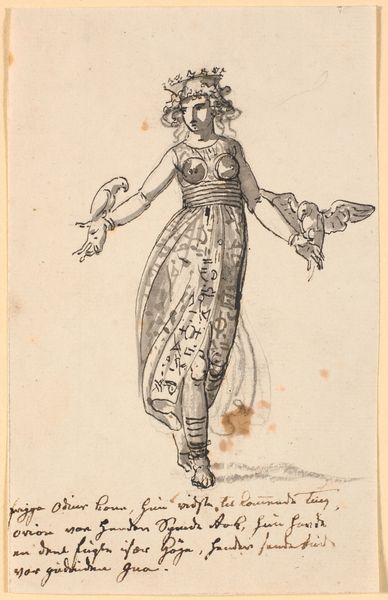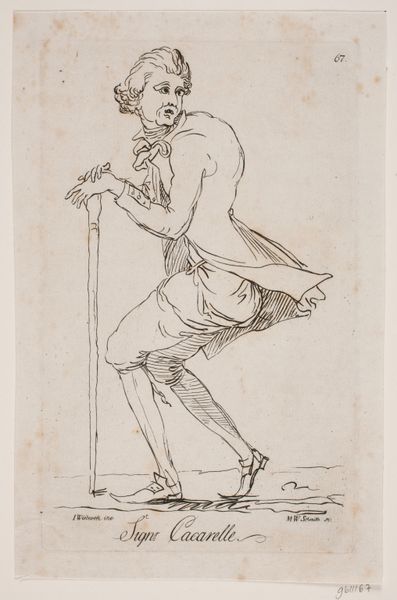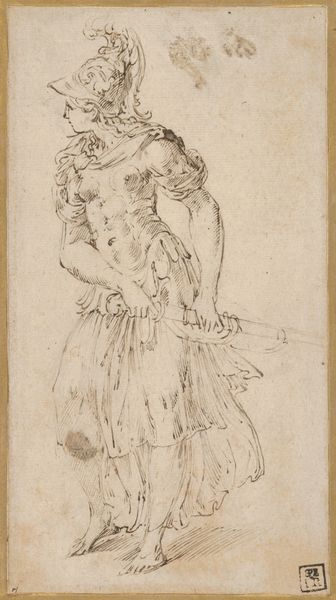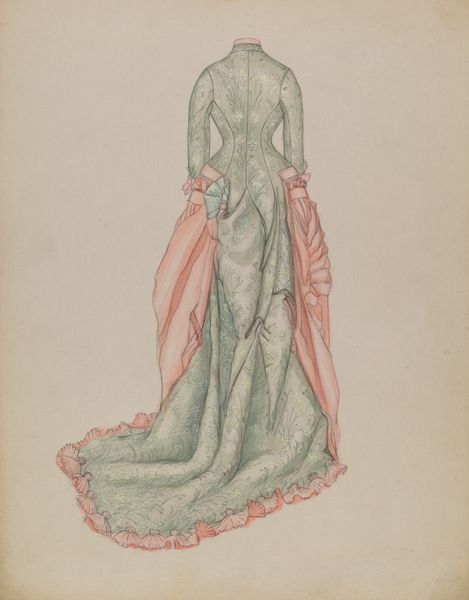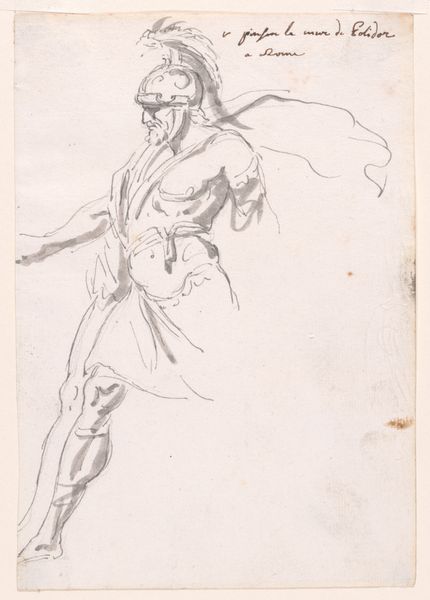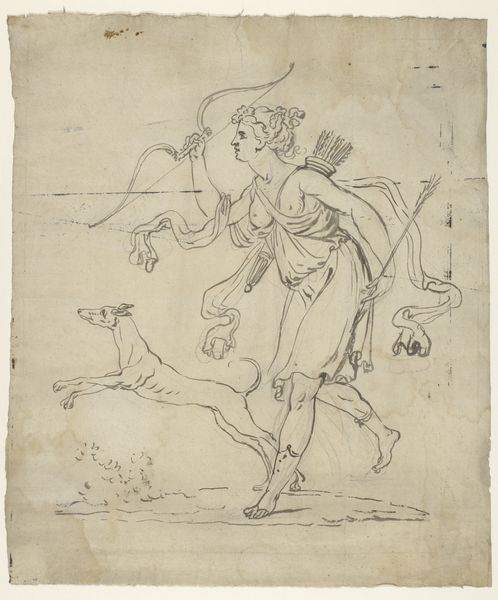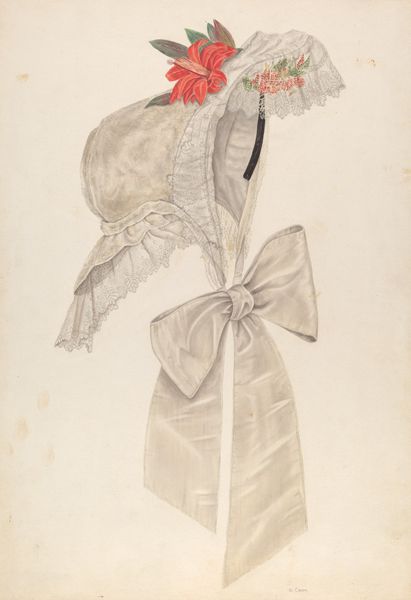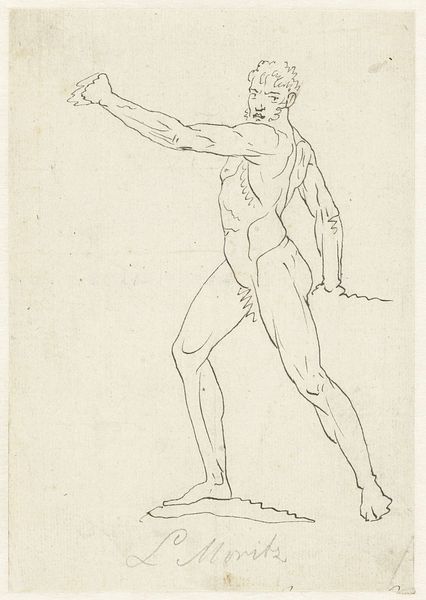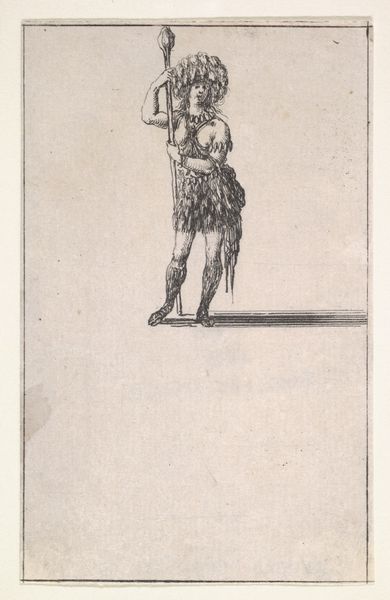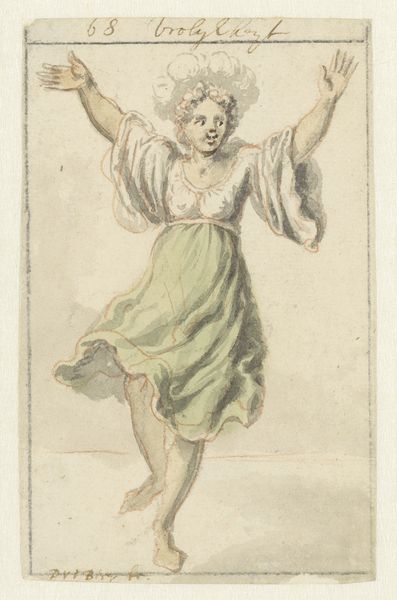
Franconi, Twirling Flaming Cones 1768 - 1810
0:00
0:00
drawing, print, watercolor
#
portrait
#
drawing
# print
#
watercolor
#
romanticism
#
watercolour illustration
#
genre-painting
#
academic-art
#
sketchbook art
#
watercolor
Dimensions: 19 x 12 3/4 in. (48.3 x 32.4 cm)
Copyright: Public Domain
Curator: I am swept away! There's such delicate energy in Ducros’ watercolour, “Franconi, Twirling Flaming Cones.” The flowing lines, the soft pinks and yellows... It feels like a dream, or a memory of a dream, doesn't it? Editor: It does feel quite airy. What's fascinating to me is that this watercolour print comes from sometime between 1768 and 1810, but presents a character juggling flaming cones. It begs the question: where were these cones forged, who managed their flames, and how does this skill translate to economic value or even cultural currency? Curator: Oh, that's such a fascinating way to consider it. I immediately jump to the emotional heart of the piece, to the solitary figure illuminated by the faintest light, poised on the brink of... something, of magic, perhaps. The whole Romanticism movement seems to be wrapped up in those wisps of watercolor. Editor: True, the watercolor medium definitely lends itself to that airy feel you mentioned. But looking at his form – those slightly awkward, stretched limbs – suggests he's performing a skill, a craft. It looks as though the watercolour has bled and faded onto the print, evidence of the aging material in the image before us. So many prints can circulate because they do the economic work of dispersing information – such as skill sets like juggling. Curator: That's a valid point! But perhaps, too, it captures a certain… fragility? Or perhaps it evokes the ephemeral nature of performance itself. Look at the subtle detail in the headdress – so ornate and improbable. Is that an element of fantasy commenting on this very material process that you focus on? Editor: The details might distract us from the actual labor. How hot are those cones? Are his arms protected? His concentration on that physical process is more exciting to me than that fancy feather do. Curator: Well, I find his attempt towards achieving levity really interesting! Even though his gaze is not direct, it creates this sense of an attempt, perhaps towards flight, or even towards complete lightness. Editor: Maybe this particular moment invites us to consider the historical ways spectacle and labor have been presented, consumed, and circulated through media. Curator: Hmm, well now I have a longing to find this figure somewhere amidst my own spinning plates. Editor: Yes, and to figure out who fired up his props and got him ready for the show!
Comments
No comments
Be the first to comment and join the conversation on the ultimate creative platform.
